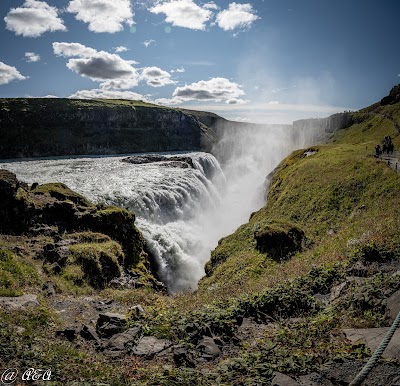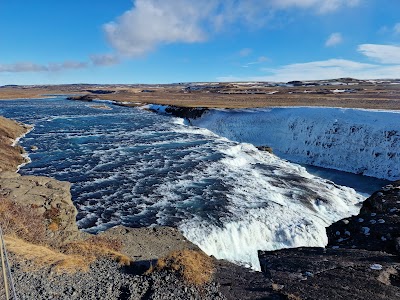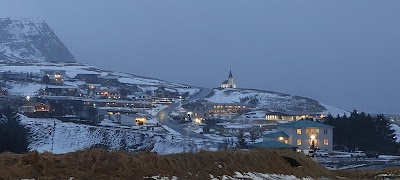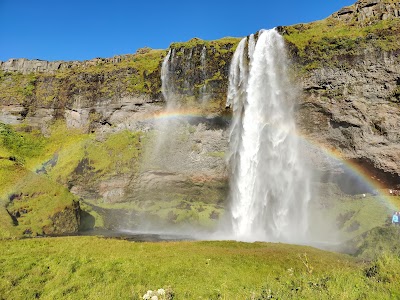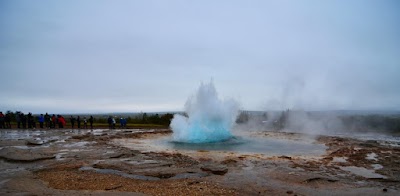Gullfoss Waterfall (Gullfoss)
Overview
Introduction to Gullfoss Waterfall
Nestled in the breathtaking landscapes of Flóahreppur, Iceland, the majestic Gullfoss Waterfall stands as one of the most iconic natural wonders of the country. Renowned for its stunning beauty and powerful cascades, Gullfoss, which translates to "Golden Falls" in English, is a must-visit destination for travelers seeking to experience the raw magnificence of Iceland's natural environment. This spectacular waterfall is part of the Golden Circle route, making it accessible for both day-trippers and those exploring the diverse wonders of Iceland.
Gullfoss is formed by the Hvítá River, which tumbles over a series of rugged cliffs and into a deep canyon below, creating a dramatic two-tiered waterfall that drops a total of 32 meters (105 feet). The river’s powerful flow and the unique geology of the surrounding area contribute to the stunning visuals, especially on sunny days when rainbows often arch over the falls. The sheer force of the water, gushing and roaring as it crashes down, creates a mesmerizing soundscape that adds to the overall experience.
Accessing Gullfoss
Reaching Gullfoss is relatively straightforward, whether you choose to drive yourself or join a guided tour. It is located about 115 kilometers (71 miles) from Reykjavík, the capital city of Iceland, and is easily accessible via the well-maintained roads of the Golden Circle. The journey to Gullfoss offers travelers a taste of Iceland's diverse landscapes, showcasing everything from geothermal areas to expansive lava fields.
Upon arrival, visitors will find a well-developed viewing area that allows for breathtaking perspectives of the waterfall. There are several paths leading to different vantage points, including a trail that brings you close to the edge of the falls, where you can feel the refreshing mist on your face. The site is equipped with facilities including restrooms and a café, making it a comfortable stop during your exploration of the region.
Best Times to Visit
While Gullfoss is a stunning sight year-round, the experience can differ significantly with the changing seasons. During the summer months, the falls are surrounded by lush greenery and wildflowers, creating a vibrant and colorful setting. In contrast, winter transforms the area into a frosty wonderland, where the falls may be partially frozen, and icicles hang from the cliffs, offering a different kind of beauty.
For travelers looking to avoid crowds, visiting during the shoulder seasons of late spring or early autumn can provide a more tranquil experience. Early mornings or late afternoons also tend to be less busy, allowing for uninterrupted views and the opportunity to take stunning photographs of this natural marvel.
Environmental Significance
Gullfoss is not only a visual spectacle but also an environmentally significant site. It is part of a larger conservation effort to protect Iceland's unique ecosystems and natural landmarks. The waterfall is surrounded by a national park, which boasts a variety of flora and fauna, including bird species that thrive in the untouched nature of the region.
The history of Gullfoss is also deeply intertwined with Icelandic culture and heritage. In the early 20th century, there were plans to harness the waterfall’s immense power for hydroelectric energy, which sparked a national movement to preserve the site. Thanks to the efforts of early environmentalists, Gullfoss remains a protected natural monument, allowing future generations to appreciate its grandeur.
Conclusion
Visiting Gullfoss Waterfall is an unforgettable experience that encapsulates the wild beauty of Iceland. Whether you are an avid nature lover, a photography enthusiast, or simply seeking a moment of tranquility amidst the stunning landscapes, Gullfoss offers something for everyone. The combination of the waterfall's power, the surrounding scenery, and the rich cultural history makes it a highlight of any trip to Iceland. As you stand at the edge, feeling the mist on your skin and listening to the thunderous roar of the water, you will understand why Gullfoss is often referred to as the crown jewel of Icelandic waterfalls.


